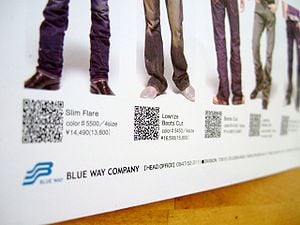Plan Your Stay in Touch Campaign to Lead to Conversions
By Jaco Grobbelaar on Thu, Jul 14, 2011 @ 10:25 PM

Nurturing plays a crucial role in building your brand. To nurture your leads means to build a relationship with qualified prospects that may not be ready to buy yet, with your goal to be earning their business when they are ready. Most non-sales-ready clients will eventually be ready and you want to be the company they turn to when that time comes.
How do you nurture those prospects who are not yet ready to engage with sales? After you have respectfully gotten their permission to contact them and you have begun engaging them in conversation through your ‘Incoming Lead Processing’ campaign, it’s time for you to begin your ‘Stay in Touch’ campaign.
'STAY IN TOUCH' CAMPAIGNS
‘Stay in Touch’ campaigns are useful for all prospects that aren’t ready to buy. These campaigns form the backbone of your lead nurturing program by giving out a little relevant content at a time, educating them and building trust and credibility for your company. Touching base with prospects regularly you will keep your brand in their mind so they will contact you when they are ready for the next step.
Think about the characteristics of your audience. As you get to know them you will know how best to approach them. Use online forms and ‘Incoming Lead Processing’ campaign information to get to know your leads. You would not send the same kinds of communications to a CEO of a company if he were a stay-at-home dad as you would if he were a 60-year-old military officer.
BUYING STAGES
Next you need to be aware of the buying stages a prospect goes through since your nurturing will be synchronized to each. In classic marketing there are four main stages: Awareness: Identify a business need; Consideration: Determine possible solutions; Research: Evaluate different solutions; and Purchase: Select a solution and negotiate the purchase.
A B2B research firm Enquiro suggests that the buying process is not a simple logical, rational, and linear process where a prospect moves neatly from one stage to the next; rather, prospects move chaotically forward and backward through the process as they balance rational decision making with the emotional impacts of fear and risk. If you look at your own decision making processes, you will probably see that this makes the more sense.
Understanding the processes will help you nurture your lead and maybe help them make their purchase sooner rather than later.
CONTENT
Both the buying role and buying stages come together with your content. Since lead nurturing is about maintaining an ongoing conversation, your content will play a huge role in lead nurturing. You might even think of yourself as a sales rep’s stand-in when the person is not yet ready to buy. Your content will change as the lead moves into different stages.
How do you do this?
- Be sensitive to your prospect’s schedule and attention span. Short, sweet, and to the point are always winners.
- Make content valuable, not self-promotional. Put your audience’s interest ahead of your own. They know the material you supply refers to your product or service.
- Use sales and marketing emails as a chance to get personal, not pushy.
When you nurture your leads effectively, they will not feel like you are only communicating with them to sell your product to them. They will feel like you care about helping them with the decision process, which is the hardest part of making a buying decision. Your help will be the value added that can turn a lead into a conversion.
Related articles
- The "Why" for Lead Nurturing (marketinginteractions.typepad.com)
- From Ripe to Ready: Nurturing Leads Increases Sales Conversion (businessinsider.com)
Share this
You May Also Like
These Related Stories
Nurture Your Leads to Increase Your Sales


Nurture Your Leads to Increase Your Sales
Sun, Jul 10, 2011 @ 08:08 PM
3
min read
How to Determine the Best Number of Times to Contact Your Leads


How to Determine the Best Number of Times to Contact Your Leads
Sun, Jul 17, 2011 @ 08:51 PM
2
min read
QR CodesA Paper-based Hyperlink


QR CodesA Paper-based Hyperlink
Mon, Jul 04, 2011 @ 08:28 PM
2
min read
.png?width=302&height=75&name=BVM%20Logo%20-%20transparent%20(1).png)



No Comments Yet
Let us know what you think